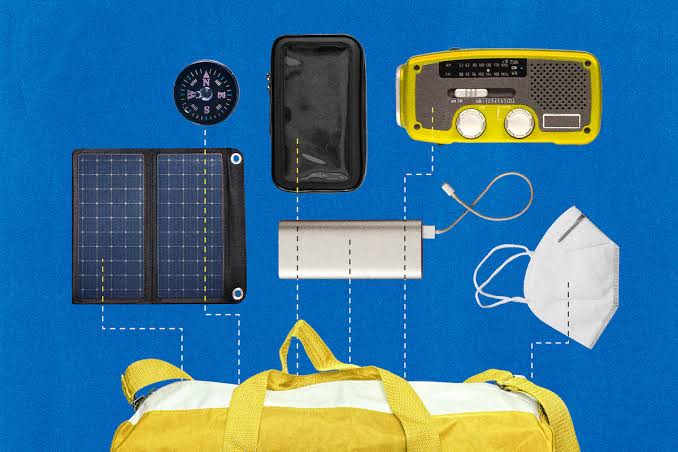Wearable technology has rapidly evolved into a crucial tool for modern healthcare. These devices, ranging from smartwatches to fitness trackers and advanced medical-grade wearables, are designed to monitor vital signs and provide real-time health data. Their convenience and ability to deliver continuous health insights have made them essential for both preventive healthcare and chronic disease management. With the integration of advanced sensors, AI-driven analytics, and cloud connectivity, wearables have become more accurate, reliable, and accessible to the general public.
Real-Time Tracking of Vital Signs
One of the most significant benefits of wearable devices is their ability to track vital signs in real time. This includes heart rate, blood oxygen levels, sleep patterns, and even body temperature. Such continuous monitoring helps individuals stay aware of their health conditions and detect irregularities early.
These devices often use optical sensors, accelerometers, and gyroscopes to collect data seamlessly throughout the day. For example, detecting abnormal heart rhythms or sudden drops in oxygen saturation can prompt users to seek immediate medical attention, potentially preventing severe complications.
Support for Chronic Disease Management
Wearables play an important role in helping individuals manage chronic health conditions. Patients with diabetes, heart disease, or respiratory illnesses can use wearable devices to track specific metrics tailored to their condition.
For example, a person with diabetes can use a continuous glucose monitor (CGM) integrated into a wearable system to track blood sugar levels throughout the day. Similarly, heart patients can use ECG-enabled wearables to detect early signs of arrhythmia, allowing for faster medical intervention.
Promoting Preventive Healthcare
By providing consistent health insights, wearable technology encourages preventive healthcare. Users can track their daily activity levels, calorie consumption, and sleep quality to ensure they maintain healthy habits. This constant feedback loop motivates individuals to make better lifestyle choices, such as improving diet, increasing exercise, and managing stress levels.
Preventive healthcare through wearables reduces the likelihood of developing lifestyle-related illnesses and minimizes the strain on healthcare systems.
Integration with Telemedicine Services
The combination of wearable technology and telemedicine is transforming healthcare accessibility. Wearables can transmit health data directly to medical professionals during virtual consultations, allowing doctors to make informed decisions without requiring an in-person visit.
This is especially beneficial for patients in rural or underserved areas who may not have easy access to healthcare facilities. Remote monitoring also ensures that patients with mobility issues can receive consistent medical attention without unnecessary travel.
Early Detection of Medical Emergencies
Wearables equipped with AI and machine learning capabilities can detect potential health emergencies before they become critical. For instance, some devices can identify patterns in breathing that may signal a respiratory condition, or monitor heart activity to detect early signs of a heart attack or stroke.
Immediate alerts can be sent to both the user and emergency contacts, ensuring rapid response in life-threatening situations. This proactive approach can save lives and significantly improve recovery outcomes.
Encouraging Physical Fitness and Well-being
Fitness-focused wearables motivate users to stay active by tracking steps, calories burned, and workout intensity. They provide personalized training recommendations and reminders to move throughout the day.
Many devices also include stress monitoring features that help users manage mental well-being through guided breathing exercises or mindfulness activities. This holistic approach supports both physical and emotional health.
Key Benefits of Wearable Health Technology
- Continuous monitoring of vital health metrics
- Early detection of irregular health patterns
- Improved chronic disease management
- Better integration with telemedicine services
- Increased user engagement in preventive healthcare
- Enhanced physical fitness tracking and motivation
- Real-time emergency alerts for critical conditions
Challenges and Considerations
While wearable technology offers numerous advantages, there are challenges that must be addressed for widespread adoption. Data privacy and security remain a major concern, as sensitive health information is often transmitted and stored online.
Battery life is another limitation, especially for devices with advanced sensors and features. Additionally, accuracy can vary among devices, and reliance on wearables should not replace professional medical evaluations.
The Future of Wearables in Health Monitoring
The future of wearable health technology looks promising, with advancements in AI, sensor accuracy, and battery efficiency. We can expect more personalized health insights, better predictive analytics, and seamless integration with electronic health records.
Emerging trends include wearables capable of monitoring hydration levels, detecting early signs of infection, and providing advanced rehabilitation support. As the technology continues to evolve, wearables will become even more essential in improving healthcare outcomes worldwide.




Nice